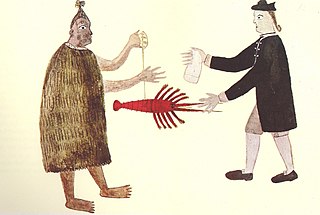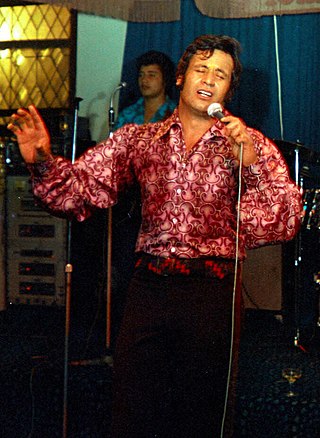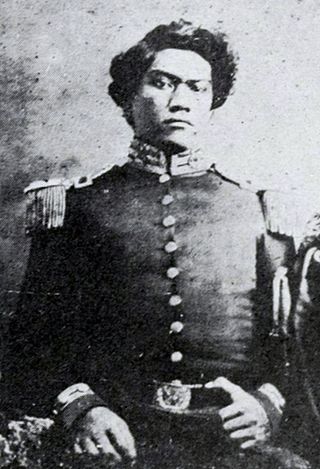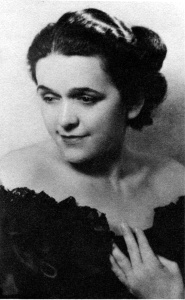Related Research Articles
Māori, or te reo Māori, commonly shortened to te reo, is an Eastern Polynesian language spoken by the Māori people, the indigenous population of mainland New Zealand. A member of the Austronesian language family, it is closely related to Cook Islands Māori, Tuamotuan, and Tahitian. The Maori Language Act 1987 gave the language recognition as one of New Zealand's official languages.

The Treaty of Waitangi is a document of central importance to the history of New Zealand, its constitution, and its national mythos. It has played a major role in the treatment of the Māori population in New Zealand by successive governments and the wider population, a role that has been especially prominent from the late 20th century. The treaty document is an agreement, not a treaty as recognised in international law, and has no independent legal status, being legally effective only to the extent it is recognised in various statutes. It was first signed on 6 February 1840 by Captain William Hobson as consul for the British Crown and by Māori chiefs from the North Island of New Zealand.
The music of Hawaii includes an array of traditional and popular styles, ranging from native Hawaiian folk music to modern rock and hip hop. Styles like slack-key guitar are well known worldwide, while Hawaiian-tinged music is a frequent part of Hollywood soundtracks. Hawaii also made a contribution to country music with the introduction of the steel guitar. In addition, the music which began to be played by Puerto Ricans in Hawaii in the early 1900s is called cachi cachi music, on the islands of Hawaii.

In Hawaiian religion, Pele is the goddess of volcanoes and fire and the creator of the Hawaiian Islands. Often referred to as "Madame Pele" or "Tūtū Pele" as a sign of respect, she is a well-known deity within Hawaiian mythology and is notable for her contemporary presence and cultural influence as an enduring figure from ancient Hawaii. Epithets of the goddess include Pele-honua-mea and Ka wahine ʻai honua.

Native Hawaiians are the indigenous Polynesian people of the Hawaiian Islands.

Sir Howard Leslie Morrison was a New Zealand entertainer. From 1964 until his death in 2009, he was one of New Zealand's leading television and concert performers.
Moriori, or ta rē Moriori, was a Polynesian language most closely related to New Zealand Māori and was spoken by the Moriori, the indigenous people of New Zealand's Chatham Islands, an archipelago located east of the South Island.
Uenuku is an atua of rainbows and a prominent ancestor in Māori tradition. Māori believed that the rainbow's appearance represented an omen, and one kind of yearly offering made to him was that of the young leaves of the first planted kūmara crop. He was a tribal war god invoked before battles, particularly in the northern half of the country. It was said that if a taua appeared under the arch of the rainbow, it would be defeated in battle, and likewise, if they appeared to either side of the rainbow, they would be victorious. The Māori identified hawk feathers and a particular star called Uenuku as being sacred to him.
Wilfred Jeffs, better known by the stage name Bill Sevesi, was a musician and master of the steel guitar who helped popularise Hawaiian-style music in New Zealand and the Pacific Islands.
Bill Wolfgramm aka Bill Wolfgramme was a musician specialising in lap steel guitar and popular Hawaiian music. He was born in the island kingdom of Tonga and was also of German descent. He is the former leader of Bill Wolfgramm & His Islanders, a popular island band in New Zealand that played regularly at the Orange Ballroom, a historic dance venue in Auckland.
Viking Records was an independent record label that featured many New Zealand and Polynesian recording artists.
Zodiac Records was a New Zealand based label founded in 1950. It was originally owned by Stebbing Recording and Sound, Ltd.(until 1965) then Zodiac Records Ltd., headquartered in Auckland; the company also released both 78s and 45s. Artists that released their records on that label included Howard Morrison, Herma Keil The Keil Isles, Ray Columbus and The Invaders, Allison Durbin, Sandy Edmonds, The Pleazers, The Gremlins. It also had a distributed label, Viscount Records, owned by Gary Daverne, Eldred's cousin.
Rudi Wairata aka Rudy Wairata(1929/1930 –1981) was an influential Indonesian musician who had fronted the Mena Moeria Minstrels and the Amboina Serenaders. Wairata's style of playing was influenced by Sol Hoʻopiʻi and Andy Iona. Along with George de Fretes he was a prominent musician in the genre of Hawaiian steel guitar music. His song "Rock'n Roll Breezes" may be the first Indo-rock song.
"Hilo March" is a Hawaiian popular song written by Joseph Kapeau Aeʻa. It was originally called "Ke Ala Tuberose". It has been covered by a number of musicians, Polynesian and non-Polynesian alike. It was also used in the soundtrack of SpongeBob SquarePants.

Charles Edward King was an educator, Hawaii territorial legislator, and a songwriter who is most widely known as the composer of "Ke Kali Nei Au". King was inducted into the Hawaiian Music Hall of Fame in 1995. Music historian George Kanahele regarded King as the "Dean of Hawaiian Music", although this sobriquet is more associated with John Kameaaloha Almeida.
Let me Hear You Whisper is a popular Samoan song that has been covered by a multitude of artists that include Jo Stafford, Nephi Hannemann, the Samoan Surf Riders, Fatu, and many others. The song is a staple in Samoan music and has great popularity in the Pacific. The title in Samoan is "Tele i’a o le sami".

William Hoapili Kaʻauwai was a Hawaiian high chief and politician, and religious deacon of the Kingdom of Hawaii. He served two terms as a member of the House of Representatives of the Legislature of the Kingdom in 1862 and 1870. He became the only Native Hawaiian to be ordained a priest of the Anglican Church of Hawaii and traveled with its founder Queen Emma to Europe between 1865 and 1866, circumnavigating the globe upon his return eastward via New Zealand.

Lena Machado was a Native Hawaiian singer, composer, and ukulele player, known as "Hawaii's Songbird". She was among the first group of musical artists honored by the Hawaiian Music Hall of Fame in 1995. Noted for her use of the Hawaiian vocal technique of "ha'i," which emphasizes the transition between a singer's lower and falsetto vocal ranges, and her use of "kaona" when writing song lyrics, she entertained primarily in Hawaii and the mainland United States. She sold leis on the Honolulu piers as a child, and aspired to become a singer like the women she saw greeting incoming passengers. KGU radio manager Marion A. Mulroney discovered her as she sang in a mango tree next door to his home. She performed regularly on KGU, where Royal Hawaiian Band conductor Mekia Kealakaʻi heard her and hired her as a featured soloist in 1925. Her association with the Royal Hawaiian Band would last five decades. During World War II, she had her own radio show on KGU.

Ēpiha Pūtini, born Te Rangiata-Ahua Ngamuka and later known as Jabez Bunting was a prominent chief of Ngāti Tamaoho, who occupied the area south of Papatoetoe and through the Hunua Ranges to the Bombay Hills. As rangatira, Pūtini was involved in multiple land disputes and controversial land sales in the isthmus and south Manukau area during the 1830s and early 1840s, which led to an exchange of gunfire between individuals from Ngāti Tamaoho and neighbouring iwi Ngāti Te Ata, and resulted in several deaths on the side of Ngāti Te Ata. Pūtini is best remembered for his Wesleyan faith, which resulted in the establishment of the Ihumātao Mission Station, as well as his continued efforts to foster peace between Māori and European settlers.
References
- ↑ http://www.amplifier.co.nz Viking Sevenseas > Daphne Walker
- ↑ http://www.vac.org.nz/nostalgia-award/ Archived 14 February 2019 at the Wayback Machine Variety Artists Club of New Zealand Nostalgia Award Page
- ↑ Simon Grigg Website Zodiac 45s
- ↑ Discogs Daphne Walker avec Bill Sevesi et Les Samoan Surfriders* – Reka Reka
- ↑ Discogs Daphne Walker With Bill Sevesi And His Islanders* – Island Favourites
- ↑ National Library of Australia The great Daphne Walker [sound recording]